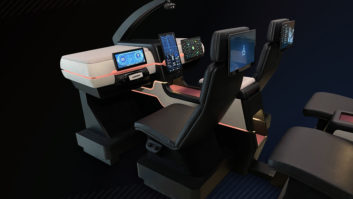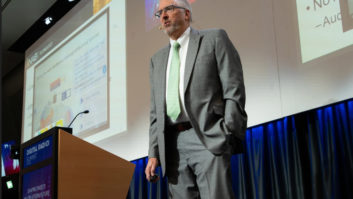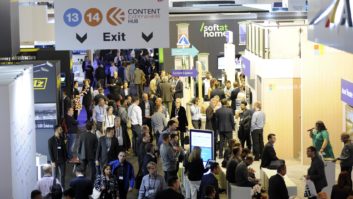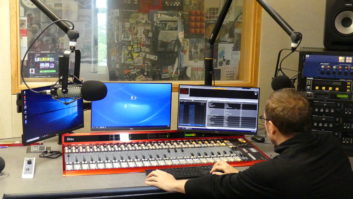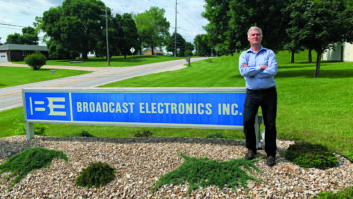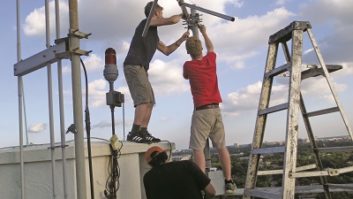Applied Technology: The New Face of Radio
May 5, 2014 8:20 AM, By David Holland, Omnirax

�America”s Morning Show� features embeded monitors, mics, switches and keyboards.
When ESPN commissioned us in 2008 to build two new on-air radio studios, the challenge was to make them video friendly. At the time, �Mike & Mike� was already a popular show being simulcast on television, but no radio studios on the campus were �TV friendly.� Since completing that project, we”ve done more than a dozen more where �visual radio� was a key component in studio and studio furniture design. At this year”s NAB Show, at least 50 percent of the people planning on new studio builds were considering some type of video in their plans.
Simulcast, streaming video, webcasting � they all need to overcome the visual clutter of radio”s typical above-counter profusion of monitors and mic booms and present a clean face to the cameras. Here are a couple of the strategies you can employ to make this work in your studio.
Over the Top
�America”s Morning Show� with Blair Garner was conceived as a TV show that happens to be on the radio. With lots of space, computer-controlled lighting and video embedded in the furniture and the wall behind (not to mention room for a live audience), this really is a visual studio. The look and feel of the furniture drove the design; the engineering challenge was to embed monitors, mics, switches and keyboards into a structure that looked permanent, yet could be unbolted and wheeled off the stage to make way for a live performance.
Multi-level

An overhead view in the shop showing the three layers

The view through the control room glass covers all five positions: host, co-host, screener, producer and guest. Photo by Chris Pendi
At KIRO-FM in Seattle we employed a three-level design with the control room and studio working together to produce the show. There is a work surface for the talent, technology �moat� for monitors, mic booms, switches and cable routing, and a �top hat� for the camera to feast on. Layering in this manner made it easy for the engineers to have access to gear (in racks under the top hat) and run wire, left the talent free to spread out and work normally while the camera just grabs the perfect image.

This is what the primary camera sees. The screen image can be changed. Photo by Chris Pendi

Ron and Don have room to spread out with a comfortable and ergonomical arrangement, and tall chairs to match the surface height. Photo by Chris Pendi
Low Riders

This four-person setup places six low monitors in front of the host, two in front of the co-host, with additional spots for the producer and engineer.
This approach keeps everything low so hand-held cameras can roam and capture visuals on the fly. The key is dropping the monitors down to surface height and planning on low profile mic booms. Yellowtec just showed a new M!ka boom at the NAB Show, which is designed just for this purpose. Studio Items have a number of other suitable models.

A two-level design includes the top hat and work surface with sunken monitors. The shape of the top hat provides the desired reflection for the camera while shielding the papers and peripherals from view.
Are you ready for Visual Radio?
While this short primer focuses on furniture, clearly there are other considerations not covered here. The studio must be large enough for pleasing camera angles, of course the cameras themselves (plus operators or remote software), and additional attention must be paid to the lighting.
As with all studio planning, thinking about these things far enough in advance is critical in helping to make your �furniture headache� go away. Remember, the first thing in the room shouldn”t be the last think that you think about.
Holland is VP Design, Omnirax Furniture Company, Sausalito, CA.
May 2014
Update on AM radio, Beasley builds anew in Las Vegas, all-digital AM’s future, all-in-one portable PAs, tech tips and more….






